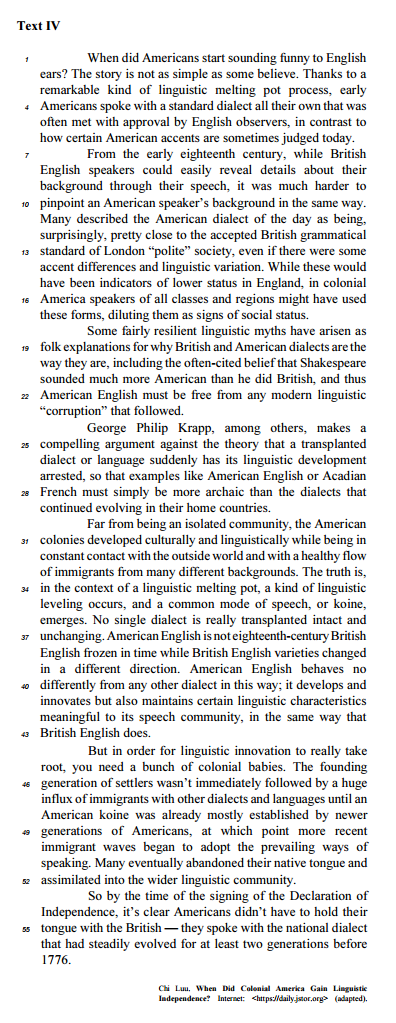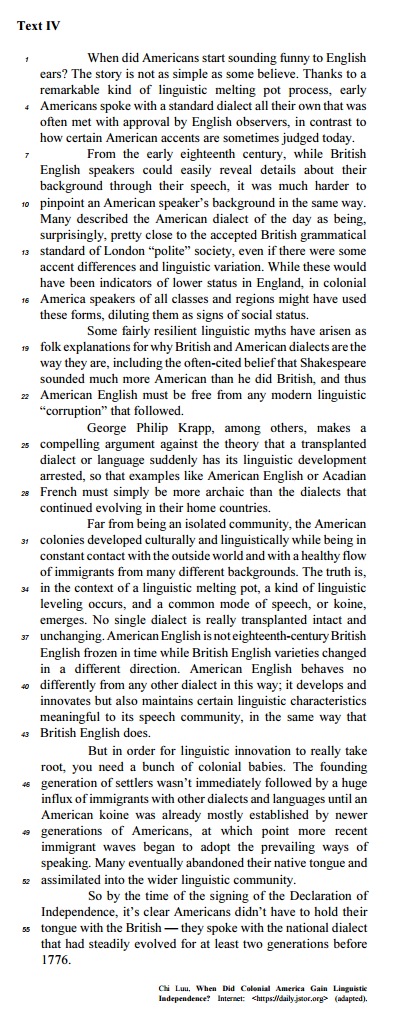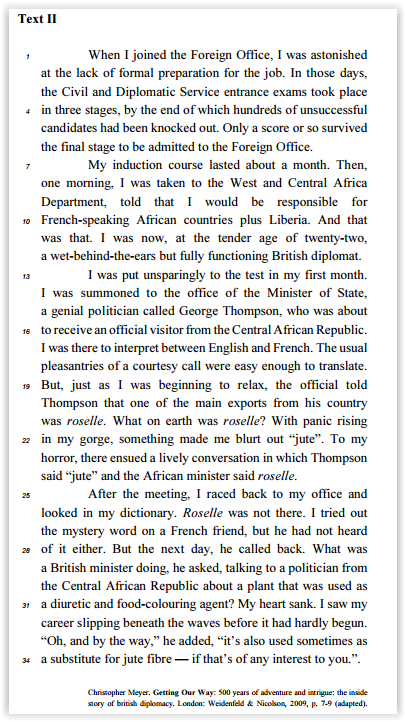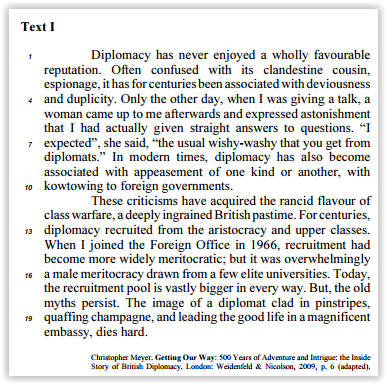Decide whether the following statements are right (C) or wrong (E) according to text I.
It can be correctly inferred from the text that there tends to be presently more female diplomats, as well as diplomats with more diverse social backgrounds, than in 1966.
Considering the ideas and the vocabulary of text II, decide whether the statements below are right (C) or wrong (E).
After all stages of the Civil and Diplomatic Service entrance exams, the number of candidates admitted was around 20.
Decide whether the statements below, which concern the ideas of text II and the vocabulary used in it, are right (C) or wrong (E).
The passage “a wet-behind-the-ears but fully functioning British diplomat" (l.12) indicates that the author's inexperience didn't prevent him from getting a position of responsibility in the Foreign Office.
Decide whether the statements below, which concern the ideas of text II and the vocabulary used in it, are right (C) or wrong (E).
The word “unsparingly" (l.13) can be correctly replaced by unmercifully, without this changing the meaning of the text.

Decide whether the following statements are right (C) or wrong (E) according to text IV.
According to the text, the fact that social origin was not as easy to identify based on the koine of eighteenth-century Americans as was the case with contemporary Britons reflected the early American colonies' egalitarian ethos.

In text IV, without altering the general meaning of the sentence, "pinpoint" (l.10) could be replaced by (mark right — C — or wrong — E)
convey
Considering the grammatical and semantic aspects of text V, decide whether the following items are right (C) or wrong (E).
The expression “on a par" (l. 20 and 21) means competing.
Considering the grammatical and semantic aspects of text I, decide whether the following items are right (C) or wrong (E).
The words “clad" (l. 18) and “quaffing" (l.19) could be correctly replaced by dressed and sipping without this altering the meaning of the sentence, although this substitution would make the text less humorous.
Considering the grammatical and semantic aspects of text I, decide whether the following items are right (C) or wrong (E).
The recruitment policy of the British diplomatic service was designed and planned by elite academics and university intellectuals.
Decide whether the statements below, which concern the ideas of text II and the vocabulary used in it, are right (C) or wrong (E).
The fact that the author didn't know the meaning of the word “roselle" and translated it as “jute" was prejudicial to the British Minister.
Decide whether the statements below, concerning the ideas and the vocabulary of text III, are right (C) or wrong (E).
The contrast between the images created by the expressions “monochrome, middle-aged and male" and “silk scarves and coloured jackets" functions as a rhetorical resource which reinforces the idea that French diplomacy is becoming a more feminine realm.

In text IV, without altering the general meaning of the sentence, "pinpoint" (l.10) could be replaced by (mark right — C — or wrong — E)
ascertain.

In text IV, without altering the general meaning of the sentence, "pinpoint" (l.10) could be replaced by (mark right — C — or wrong — E)
compare.

Considering the grammatical and semantic aspects of text IV, decide whether the following items are right (C) or wrong (E).
The expression “a bunch of" (l.45) could be replaced by a cluster of without altering the meaning of the passage.
Decide whether the following statements are right (C) or wrong (E) according to text I.
The woman mentioned in the first paragraph didn't expect the author to reveal his true opinions.







